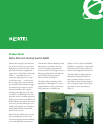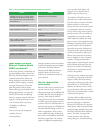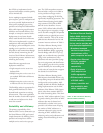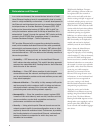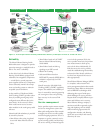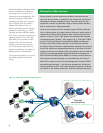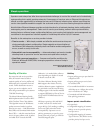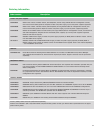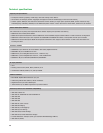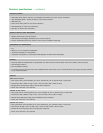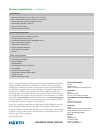
7
Quality of Service
For enterprises and service providers
alike, the network must be able to
maintain quality of service profiles and
differential service treatment from end
to end. Traffic classification occurs at
ingress, per-service endpoint, and is
done using customer 802.1p or customer
TOS/DSCP markings.
The Metro Ethernet Routing Switch
8600 implementation is based on RFC
2698, Two Rate Three Color Marker.
This algorithm meters an IP/Ethernet
packet stream and marks its packets
based on two rates — Peak Information
Rate (PIR) and Committed Information
Rate (CIR) — and their associated burst
sizes, to be green, yellow or red. A packet
is marked red if it exceeds the PIR.
Otherwise, it is marked either yellow or
green depending on whether it exceeds
or doesn’t exceed the CIR.
The Metro Ethernet Routing Switch
8600 supports four classes of service,
with four distinctive queues. Applications
are prioritized across the network using
intelligent agents in the interface modules
to support IEEE 802.1p Class of Service
(CoS) and IETF Differentiated Service
(DiffServ).
All frames egressing a 802.1ah MAC-
in-MAC network are marked with
proper 802.1p CoS markings, enabling
end-to-end QoS and multi-vendor
interoperability. Operators can set
policing parameters per port for trans-
parent ports and per-port per VPN for
switched (mapped) ports.
Policing
• Ingress policing on a per-port basis for
transparent UNI
• Ingress policing on per-service basis
for switched UNI
• User-tunable bandwidth in increments
of 64 kbps up to 1 Mbps, then to line
rate in increments of 1 Mbps
• Committed and Peak Information
Rate policing parameters
Ingress packet classification
• Per-port basis
• Configurable mapping of customer
802.1p to service provider priority
level per service
• Configurable mapping of customer
Type of Service (ToS) field to service
provider priority level per service
Simple operations
Operators and enterprises alike face unprecedented challenges to control the overall cost of maintaining
and operating their rapidly growing networks. Convergence of services onto an Ethernet infrastructure
affords a unique opportunity to leverage the low cost of Ethernet infrastructure without sacrificing the
carrier-class qualities needed to support the scale and variety of services flowing through the network.
Nortel’s Metro Ethernet Manager provides a single interface for all network planning, device configuration
and ongoing service management. Tasks such as service provisioning, network state synchronization,
backup/restore, software image configuration/delivery, and ongoing fault detection and management are
centralized in one operations solution capable of visualizing the entire L0/L1/L2 network.
Benefits to the enterprise or service provider include:
• Time to service
—
With simple, scalable and effective end-to-end service provi-
sioning and agile network configuration. Single endpoint service activation at
the Ethernet UNI followed by continuity check verification avoids configuration
errors, as well as costly truck rolls.
• Deterministic service manageability
—
Advanced network and service trouble-
shooting leads to proactive service assurance and rapid failure analysis.
• Simplified converged operations
—
Common and familiar workflows for
Ethernet, WDM and SONET/SDH, leveraging operations values of today’s
operations model.
Metro Ethernet Routing Switch
8600 (8010C) Chassis)



